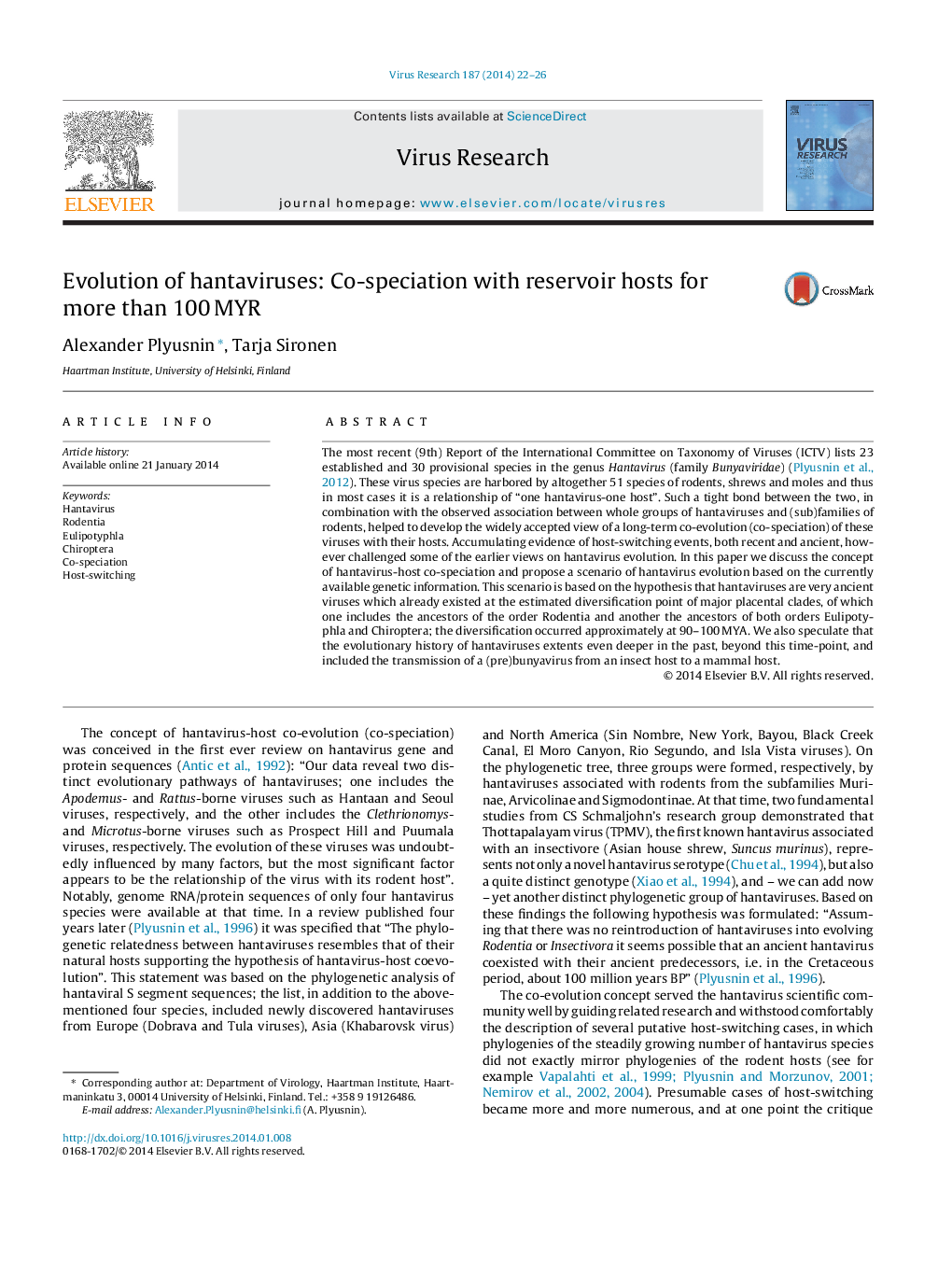| Article ID | Journal | Published Year | Pages | File Type |
|---|---|---|---|---|
| 6142533 | Virus Research | 2014 | 5 Pages |
â¢Hantaviruses and their reservoir hosts are co-evolving.â¢Hantaviruses are ancient viruses that have co-existed with their hosts for more than 100 MYR.â¢Hantaviruses may have evolved from insect-borne pre-bunyaviruses.
The most recent (9th) Report of the International Committee on Taxonomy of Viruses (ICTV) lists 23 established and 30 provisional species in the genus Hantavirus (family Bunyaviridae) (Plyusnin et al., 2012). These virus species are harbored by altogether 51 species of rodents, shrews and moles and thus in most cases it is a relationship of “one hantavirus-one host”. Such a tight bond between the two, in combination with the observed association between whole groups of hantaviruses and (sub)families of rodents, helped to develop the widely accepted view of a long-term co-evolution (co-speciation) of these viruses with their hosts. Accumulating evidence of host-switching events, both recent and ancient, however challenged some of the earlier views on hantavirus evolution. In this paper we discuss the concept of hantavirus-host co-speciation and propose a scenario of hantavirus evolution based on the currently available genetic information. This scenario is based on the hypothesis that hantaviruses are very ancient viruses which already existed at the estimated diversification point of major placental clades, of which one includes the ancestors of the order Rodentia and another the ancestors of both orders Eulipotyphla and Chiroptera; the diversification occurred approximately at 90-100Â MYA. We also speculate that the evolutionary history of hantaviruses extents even deeper in the past, beyond this time-point, and included the transmission of a (pre)bunyavirus from an insect host to a mammal host.
